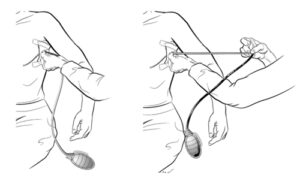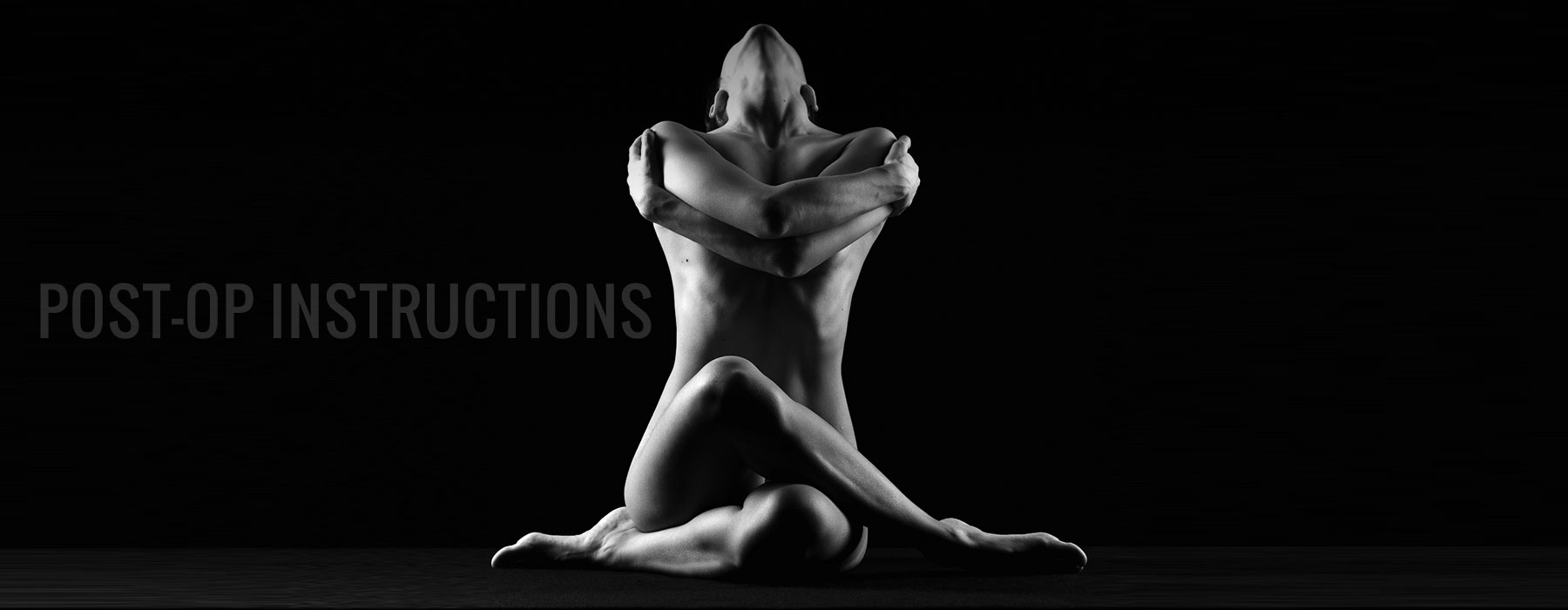
POST-OP INSTRUCTIONS
INCISIONS:
Incisions can appear several different ways:
- It may be closed with a small stitch which may be removed about one week after surgery (unless absorbable).
- It may have a drain inserted into the site and sutured into place (refer to DRAIN section).
- It may be left open in order for the fluid to drain out on its own.
One should expect a large volume of blood-tinged anesthetic solution to drain from the incision sites during the first 24 hours. This will vary from patient to patient. In general, the more drainage there is, the less bruising and the swelling there will be. You may have a few incisions drain for up to a week. Even though the fluid is red, it is only about 1% blood with the remainder being local anesthetic and saline. Maxi-pads are recommended for bandages over your drainage sites and an adult diaper for more coverage. These pads must be changed every 4-6 hours to prevent infection. Many patients have found it helpful to utilize a shower curtain or other protective pad on their mattress, underneath the sheets for the first several days after Body contouring. Try to place gauze/Maxipad so that it lays flat against skin while under garment and remove as soon as drainage controlled as bunched up prolonged use us such may contribute to divot formation.
MEDICATIONS:
After your procedure, you will be prescribed antibiotics and pain medication. It’s very important that you follow the directions for these prescriptions accurately and complete your antibiotics as prescribed. Antibiotics should be used the day of your procedure. You will take one before the procedure and 1 every 4-6 hours after surgery for a total of 4 pills (4th antibiotic pill could be taken following morning if need be). You may take your prescribed pain medication OR Tylenol to ease post-operative pain every 6 hours as needed.
You may switch to Tylenol for pain control at your discretion. Do not combine Tylenol with Percocet or Vicodin. If you do experience nausea or vomiting it is probably from to the medication. Please try to take medication with food. If it persists, please contact our office.
Do not take Aspirin or medicines that contain aspirin for 5 days after surgery since it interferes with normal blood clotting. Some medications which contain aspirin that should be avoided are: Alka-Seltzer, Excedrin, Excedrin Migraine, Emprin, Dristan, Aspirin Ascription, Darvon, and Percodan.
Do not take Ibuprofen or medicines that contain ibuprofen for 5 days after surgery as it interferes with blood clotting. Some medications containing ibuprofen that should be avoided are: Midol, Motrin, and Advil.
Do not take Aleve or medicines containing naproxen or naproxen sodium for 5 days after surgery as it interferes with blood clotting. Some medications containing naproxen that should be avoided are: Aleve, Naproxen and Naprosyn.
Do not take “Megadoses” of Vitamin E. However, a daily multi-vitamin that contains vitamin E is just fine.
Do not smoke because nicotine reduces blood flow to the skin and can cause significant complications during healing.
Do not consume alcohol for 3 days after surgery.
Do not restart prescription medications such as SSRI’s and TCA’s until 48 hours (two days) after surgery. You must wait for two days because the lidocaine used during surgery interacts with these medications.
ACTIVITIES:
It is advised that you try to get as much quiet rest as you can for optimal surgery recovery. You may resume your normal activities as tolerated. In the first 24 hours following surgery do not drive or operate hazardous machinery and do not make any important decisions as your judgment may be clouded. Later during the first day or evening after surgery you should take a short walk – it doesn’t have to be far, it just has to be enough to get you moving a little. Staying in bed the whole time can actually slow the recovery process and puts you at risk for deep venous thrombosis and pneumonia. The day after surgery if you feel well enough, you may drive your car and engage in light to moderate physical activities (no strenuous exercise such as aerobics, weight lifting, running or swimming). It is suggested that you begin with no more than 25% of your normal daily activity and gradually increase your activity daily as tolerated. You may carefully resume light exercise (walking, doing housework, light gardening, walking up a flights of stairs, dancing, stretching…etc.) and normal physical activities 2 to 3 days after surgery. If you experience more than mild swelling or discomfort you may be over doing it. This will not however affect the results of your surgery. During the first 1-2 weeks, walking is acceptable and encouraged. Once your doctor releases you, about 2-3 weeks after surgery, you can return to strenuous activities or aerobic exercise and weightlifting . Most people can return to a desk job within two days after surgery, although expect to be sore and easily fatigued for the next several days. NO DRIVING IF YOU ARE TAKING PRESCRIPTION PAIN MEDICATION.
POST-OP GARMENT:
During surgery recovery, compression garments are to be worn to hold the absorbent pads in place and to provide mild compression that encourages the drainage. Nothing should be worn under garment (i.e. underwear or bra) as this could leave indentations in skin. This also applies to gauze and absorbent pads which should be removed from under garment once drainage under controlled. The day after surgery, when the garment is first removed in order to take a shower, you may experience a brief sensation of dizziness. Feeling lightheaded is similar to what you may experience when standing up too quickly. This is caused by the rapid decompression of the chest as the compression garments are initially removed. Should dizziness occur, simply sit or lie down until it passes. Wear the compression garment 24 hrs/day for the 4-6weeks (neck garment 2-3 weeks. You are given two garments, WASH your garments in cold water and air dry. Heat will shrink the garment.
DRAINS:
You may have small plastic drains exiting numerous incision sites. These drains are sutured into place and will be pulled out at doctor’s office after your drainage stops. Typically this is in about 4-7 days, but could be up to two weeks. These drains are there to minimize the chance of seroma complications and to speed up your recovery. You will need to monitor the amount of fluid that collects in the drains by recording it on the “drain record” form that you may have received at your pre-operative appointment. When a drain becomes fairly full, release the small cap at the top and re-close. Take a measurement only after you have released the air and re-closed it. Write down the measurement of fluid. Then proceed to un-cap the bulb again and dump the fluid out into the toilet. When there is a large amount of drainage, it is advisable to place a shower liner over your mattress to avoid staining Once you have emptied the bulb, squeeze the bulb to get all of the air out, and re-cap it while you are still squeezing it. This will create suction and allow more fluid to drain. Repeat this procedure with all other drains. It is important that you keep track of the drainage from each drain site. Your doctor will need to know this information before he can remove the drain/s.
A light coating of Bacitracin could be applied over the wounds and around drain/skin insertion site.
Please note- you should try to avoid removing the garment to use the bathroom as it has vents that allow for such without removing garment.
HOW TO STRIP YOUR DRAINS:
 Grasp the tubing closest to your body (at the insertion site) with one hand and hold the tubing tightly. This hand will keep the tubing from pulling out of your body.
Grasp the tubing closest to your body (at the insertion site) with one hand and hold the tubing tightly. This hand will keep the tubing from pulling out of your body.- Take an alcohol swab in the other hand.
- Using the swab, pinch the tubing tightly just below your first hand. Keeping the tubing pinched, slide the alcohol swab down the tubing toward the collection bulb and away from your body.
- You should notice any clots in the tube are forced down the tube and into the collection bulb.
- This is called “stripping” or “milking” the tube.
- The tube may become flat from the suction. This is okay.
- COLLECTION BULBS SHOULD BE KEPT ON CONSTANT SUCTION (i.e. BULB COLLAPSED) TO FACILITATE DRAINAGE.
WOUND CARE AND BATHING:
Do not apply ice packs or a heating pad to the skin overlying the areas treated by liposuction.
Do not apply hydrogen peroxide or plastic band-aids to incision sites.
Do not soak in a bath or Jacuzzi or go into a swimming pool or the ocean for 14 days after surgery.
A light coating of Bacitracin could be applied over the wounds and around drain/skin insertion site.
CARE GIVER:
You must have someone stay with you for 24 hours after surgery. It is normal for patients to become light headed when rising from a seated or lying position. It is helpful to have someone there to assist you in getting up and around, record your medication intake, and encourage you to eat and drink.
SHOWER:
You may shower 48 hours after your surgery. If you have drains, put a long shoe lace or pantyhose around your neck and safety pin the drains to that.
GOING HOME:
You must arrange for a friend of family member to drive you home with you after surgery. You will not be allowed to drive yourself home.
DIET:
There are no dietary restrictions. Drink plenty of clear fluids. We recommend 8 glasses of water a day. We suggest you limit items that contain high levels of sodium such as soups. This will only increase your fluid retention. Avoid alcoholic beverages for 72 hours before and after treatment.
MASSAGE:
Therapeutic massage is very helpful to speed the healing process. Massage may be done as often as every day and as hard as you can tolerate beginning 3 weeks after surgery. The chin is the only area you should not massage. Whirl-pools and hot tubs are permitted only after your incision sites have closed. This is usually at 2 weeks after surgery.
EMOTIONAL RESPONSE:
You may experience mild depression the first week after surgery. After this time your mood will improve after you see the swelling and bruising fade.
NO SMOKING!!!
EXPOSURE TO SUNLIGHT:
Scars take at least one year to fade. During this time, you must protect them from the sun. Even through a bathing suit, a good deal of sunlight can reach the skin and cause damage. Wear sunscreen with a SPF of at least 15 at all times when in the sunshine. Be extremely careful if you have areas of reduced sensitivity. The same rules apply for tanning beds.
COMMON SIDE EFFECTS AFTER SURGERY:
- A collection of fluid may develop under the skin and have a “waterbed” appearance. It may make you feel more uncomfortable and swollen. If this occurs, please call us. It is something we can easily address in the office.
- If you have surgery on your lower extremities, you may experience additional swelling in your lower legs, calves and ankles. To minimize the swelling, keep your legs elevated as much as possible for the first 2 weeks.
- Menstrual irregularities with premature or delayed onset of monthly menstruation are a common side effect of any significant surgery.
- Flushing of the face, neck and upper chest may occur after liposuction and may last for a day or two.
- Slight temperature elevation during the first 48 hours after surgery is a natural consequence of the body’s reaction to surgical trauma.
- Bruising varies between each patient. The more extensive the Liposuction, the more bruising one can expect.
- If you experience constipation it is probably due to the medication. Please try to increase your intake of prunes, fiber, and clear fluids. If it persists, please contact the office.
- Males and females may experience significant swelling in the pubic region after lower abdominal liposuction. Males may need to purchase an Athletic Support Garment for significant genital swelling and elevation of the scrotum is recommended.
FOLLOW UP APPOINTMENT:
As soon as your procedure is completed it’s important that you book a follow up appointment within 4 days after surgery. This follow up appointment is to ensure that everything is healing properly and there aren’t any complications or abnormalities with your procedure.
SUPPLIES TO HAVE ON HAND:
- Shower curtains to be placed over your car seat and mattress
- Depend diapers to help capture most of your drainage
- Maxi pads to place directly on wound site inside of diaper
- Wet-Ones to clean up bathroom
- Old set of sheets & blankets
FYI: Prepare car seat, bed and pathway to restroom to protect areas from drainage.
PLEASE REMEMBER THAT FOR THE MAJORITY OF PATIENTS THE GOAL IS SIGNIFICANT IMPROVEMENT, NOT PERFECTION.



